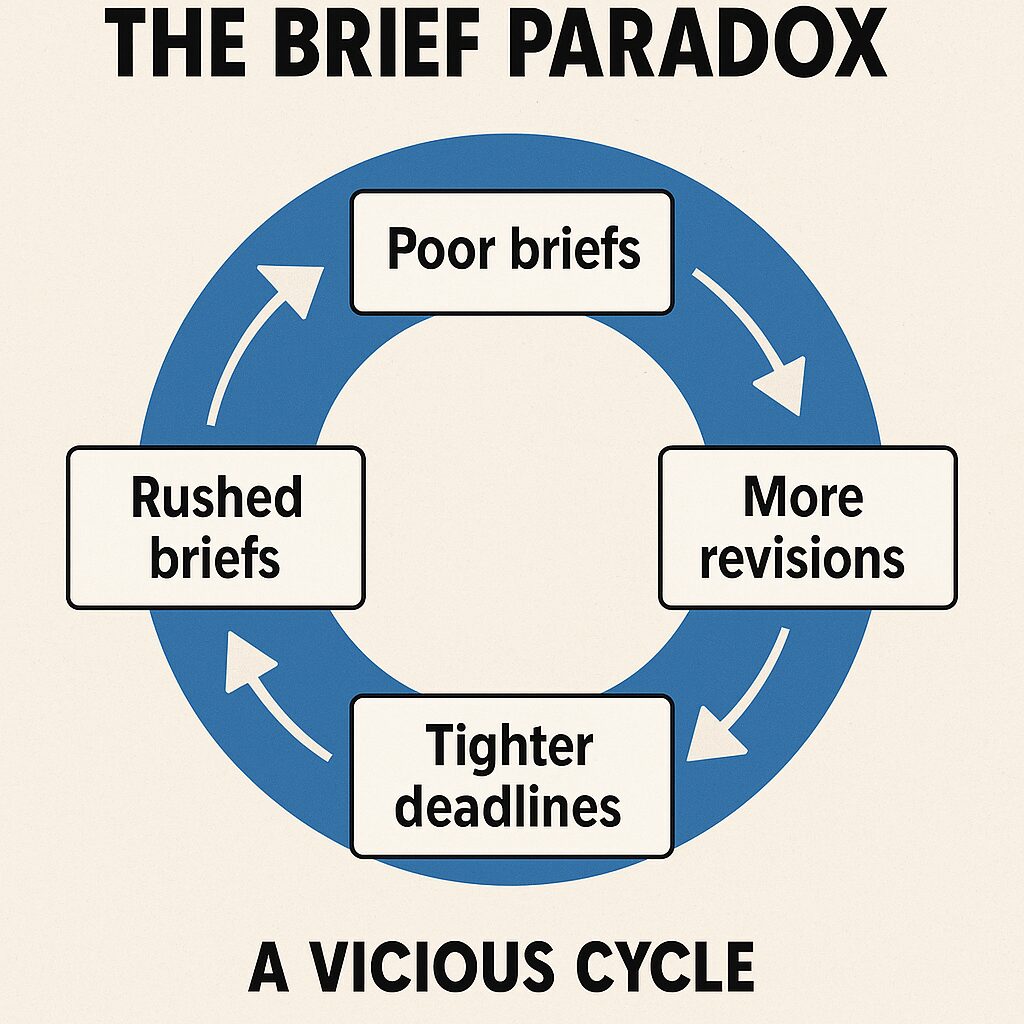There’s a fundamental truth in marketing that everyone knows but few act on: great campaigns start with great briefs. Yet walk into any agency or marketing department, and you’ll find the same story—briefs get rushed, templates get recycled, and teams jump straight into execution because “there’s no time for a proper brief.”
I’ve been guilty of this myself. In fifteen years of campaign work, I’ve seen brilliant creative killed by unclear direction and media budgets wasted on poorly defined audiences. The brief, that critical document meant to align teams and crystallize strategy, has become marketing’s greatest casualty of our always-on, move-fast culture.
But what if the solution isn’t working harder—it’s working smarter?
The Brief Paradox Here’s the paradox every marketer faces:
The brief is simultaneously the most important and most neglected part of campaign development
We know a solid brief prevents misalignment, reduces revisions, and improves outcomes. Yet when deadlines loom, briefing gets compressed into a quick email or verbal direction. This creates a vicious cycle. Poor briefs lead to more revisions, which create tighter deadlines, which lead to even more rushed briefs. Teams become reactive rather than strategic, execution-focused rather than insight-driven.

AI as Creative Partner, Not Replacement
This is where AI enters the conversation—not as a replacement for human insight, but as an amplifier of it. I developed the Marketing Brief Bot (MBB) to test this hypothesis: could AI help marketers create better briefs faster?
The results have been eye-opening. By handling the foundational research and structural elements, AI frees marketers to focus on the strategic and creative thinking that truly drives campaign success.
The process is deceptively simple. Answer five key questions, provide a product name or website, and the AI builds a comprehensive brief foundation. But the real value emerges in the iterative refinement process, a collaborative conversation that challenges assumptions and uncovers new angles.
Beyond Efficiency: The Creativity Multiplier
What I didn’t expect was how AI would enhance the creative process itself. The back-and-forth dialogue pushes beyond obvious solutions, questioning messaging choices and suggesting alternative frameworks. It’s like having a strategic partner who never gets tired of exploring possibilities.
This iterative approach has uncovered campaign angles I wouldn’t have considered, refined audience definitions in ways that improved targeting, and helped crystallize core messages that might have remained fuzzy through traditional briefing methods.
The Human-AI Creative Process
The most effective briefs now emerge from human-AI collaboration. AI handles data analysis, audience research, and structural organization. Humans contribute strategic insight, brand understanding, and creative intuition. The combination produces briefs that are both comprehensive and inspired.
This isn’t about replacing marketing judgment; it’s about augmenting it. The AI surfaces information and possibilities; marketers apply context and make decisions.
Looking Forward: The Brief Renaissance
We’re entering what I call the “Brief Renaissance”—a period where strategic planning becomes accessible, comprehensive, and creative again. AI removes the friction that has made briefing feel like a chore, transforming it back into the strategic foundation it was meant to be.
The implications extend beyond individual campaigns. When teams have better briefs, they produce better work. When briefs are comprehensive, media performance improves. When strategic thinking gets proper foundation, creative output elevates.
The question isn’t whether AI will transform marketing planning—it’s already happening. The question is whether we’ll embrace it as a tool for better strategic thinking or dismiss it as another efficiency play.
Check out the three briefs that I’ve developed ( note that these are illustrative only, there is no affiliation with any of these companies):
What’s your take? Are you seeing AI change how your team approaches campaign planning? What would make the biggest difference in your briefing process?


Leave a Reply